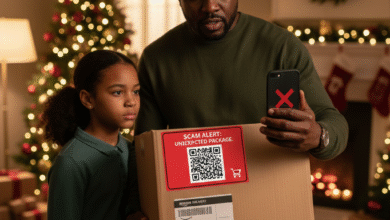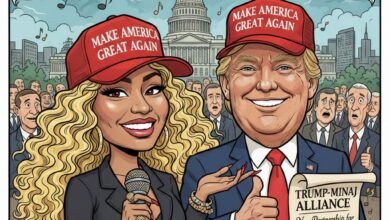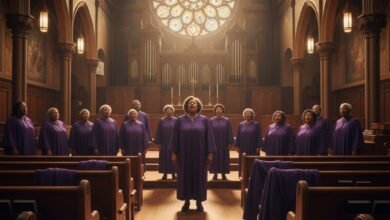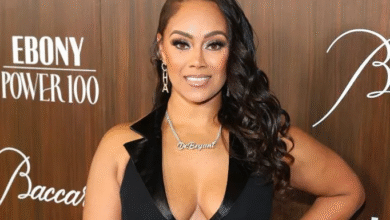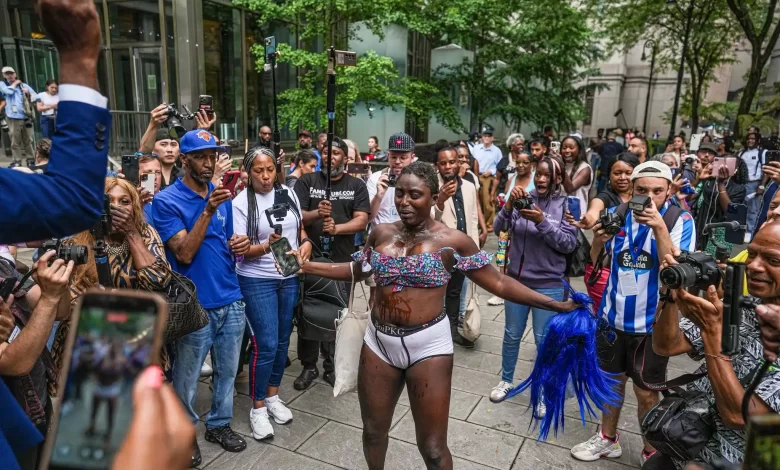
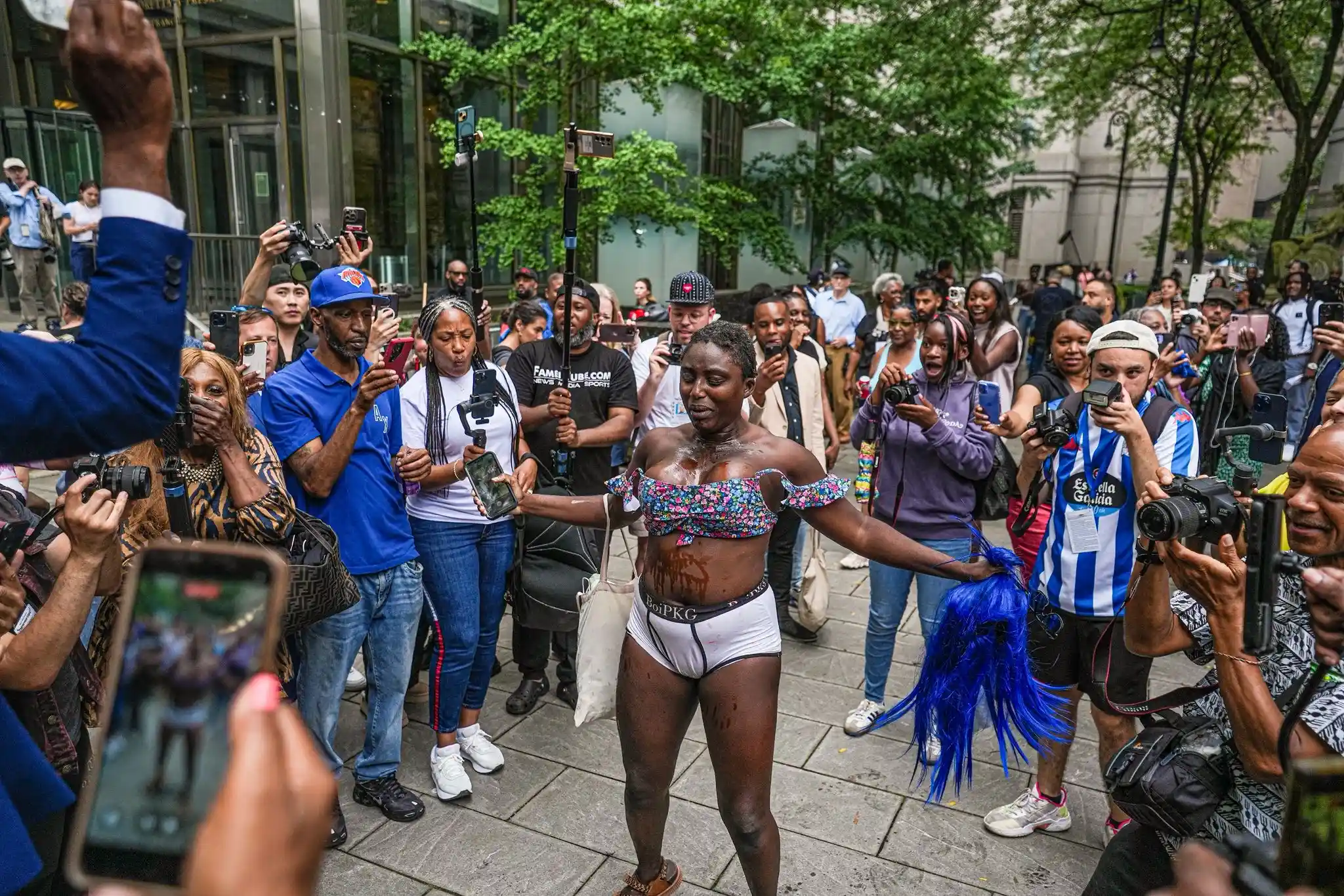
Cultural Dynamics & the “Hip Hop House”
Step inside the VIP section of a glamorous hip-hop party: the bass thumps, champagne flows like water, and beautiful young women seem to materialize from the ether, all vying for a moment of attention from the men in the center – the artists, the moguls, the ones “who made it.” The atmosphere is electric, permissive, charged with sex and power. To an outsider, it might look like pure hedonistic fun. To an insider, it’s both that and something more troubling: a world where normal rules don’t apply, where exploitation can wear the disguise of consent, and where the lines between enjoyment and abuse blur under neon lights and camera flashes.
I speak on this not just as a commentator, but from personal experience. I grew up just after the era of Atlanta’s Freaknik, but I was front and center for events like Black Bike Week in Myrtle Beach and Black Spring Break on Daytona Beach. As a young Black man, I lived for those gatherings. I remember the excitement in my veins as we cruised down the strip, music blasting, surrounded by thousands of peers dressed to impress and ready to party. The energy was liberating – youthful Black freedom on full display, or so it felt. Women were dancing atop cars, men were hollering in flirtation on sidewalks; it was chaotic, it was hypersexual, it was ours. Back then, I didn’t see men as evil or women as victims – we were all just participants in the madness, taking what we wanted from the experience. The “positive elements” were the fun, the laughter, the bonding, the feeling of being young, wild, and free. And yet, even then, if I’m honest, I knew there was a darker side right beneath the surface of those vibes.
What we didn’t talk about at those festivals was how, by nightfall, the same streets of celebration could become gauntlets of harassment. I saw it: guys grabbing at girls’ bodies as they walked by, as if it were a right; I saw girls drunkenly stumbling with men they barely knew, moments away from situations they might not fully consent to. Fights would break out – testosterone and territorial posturing turning violent. Locals often dreaded our arrival each year, because with our revelry came thefts, assaults, property damage. We were so high on the music and moment that we ignored the broken glass under our feet. As I grew older, it became harder to ignore. I can’t in good conscience cheer on the fun without acknowledging the collateral damage: the way we, as a community, sometimes treat ourselves as sex objects on the global stage, the way we export an image of our culture that highlights hypersexuality and chaos without context, the way we fail to protect the vulnerable in our midst when the lights are brightest.
This is the “Hip Hop House” that we built – a culture of extraordinary creativity and expression, but one that has arguably tolerated a level of exploitation and misogyny in the name of keeping the party going. In hip-hop and R&B circles, groupie culture has long been accepted as a norm. It’s practically a rite of passage for a male artist to have throngs of beautiful women available for sex, no strings attached. Many such encounters are consensual and fine; but many also push the boundaries – girls lied about their age to get in, or felt pressured to do more than they wanted because a star asked, or were treated as disposable afterwards. And we rarely heard their stories, because complaining would get them labeled as gold diggers or liars, and because of NDAs (Non-Disclosure Agreements) and hush money that silenced whispers before they could become roars.
Sean “Diddy” Combs’ alleged “freak-off” sex parties are a perfect microcosm of this. Consider what Cassie described: Diddy would hire sex workers (often male), he’d pick a female partner (like Cassie or “Jane”), ply everyone with drugs and alcohol, and orchestrate a wild scene for his own voyeuristic pleasure reuters.comreuters.com. That scenario is extreme, but not unheard of in the upper echelons of the music world. The very term “freak-off” sounds like something out of a bragging rap lyric. Why don’t we hear from the other participants, like those sex workers? Because that world is shrouded in secrecy and stigma. Those sex workers got paid handsomely and likely signed NDAs. If any of them felt things went too far or they witnessed assault, speaking up could mean career suicide in the underworld of high-class escorts, not to mention possible legal trouble (drugging someone is a crime, and if they were complicit, they’re not going to volunteer that information). There’s also a code of “what happens in VIP stays in VIP.” Breaking that silence can get you blacklisted by other wealthy clients. So we shouldn’t be surprised that we have not seen male escorts or others from Diddy’s parties rushing to corroborate Cassie’s story publicly – even if behind closed doors, some may have cooperated with investigators.
We also haven’t heard much from other women who were around during those times. Cassie mentions being not the only one, just the main girlfriend. Were there backup dancers, models, or random girls from clubs who had one-night encounters with Diddy and saw his temper or worse? Possibly. Why haven’t more come forward? Some reasons: loyalty, fear, shame, and the passage of time. Diddy had (and has) a lot of power in entertainment. A young woman trying to make it as a singer or model might think twice about crossing him – he could make sure she never works in the industry. Fear of retaliation is real; Cassie herself alleged Diddy threatened to kill or ruin anyone who left him or defied him people.compeople.com. Others might not see themselves as “victims” enough to step into that light – perhaps they consented to some wild nights and came away uncomfortable but chose to just move on. It’s also possible Diddy’s inner circle managed many of these women’s experiences to keep them content – expensive gifts, a polite sendoff, a non-disclosure contract in exchange for cash. Gatekeeping and silence, often enforced by other men in power, kept the machine oiled.
Let’s examine Cassie’s role through this cultural lens. Cassie was 19 years old when she was first taken under Diddy’s wing; he was in his late 30s people.com. The power dynamic was vastly unequal: he was the king-maker, she was a beautiful young woman with dreams of stardom. If we’re honest, this dynamic – older male executive “dating” a teenage artist – is uncomfortably common. At 19 or 20, Cassie likely did consent to being with him, and certainly enjoyed perks of the lifestyle (fame, wealth, access). For a long time, she didn’t publicly complain; from the outside, she looked like another willing participant in the flashy hip-hop girlfriend life – attending parties, red carpets, vacations with him. That’s where some in the community get hung up: was Cassie a victim, a survivor, or complicit?
The answer can be all of the above. Cassie can be complicit in enjoying a materialistic, morally lax environment and be a victim of manipulation and abuse. These are not mutually exclusive. In fact, abusers often exploit exactly that duality – giving their partners just enough luxury and love-bombing that it clouds the abuse. Cassie stayed with Diddy on-and-off for 11 years, which is typical of abusive cycles: periods of violence followed by apologies and good times (and in her case, likely fear of career damage if she left) people.compeople.com. Her complaint details how, after violent episodes, she would try to leave but ultimately return, sometimes even apologizing to him for “running away” – a classic trauma-bond response people.compeople.com. It also describes how hotel security in that 2016 incident urged her to escape for her safety because they saw the tape people.compeople.com. That suggests even outsiders recognized she was in danger, but still, the culture around Diddy kept it under wraps (the hotel conveniently took $50,000 from Diddy for the footagerather than call police people.compeople.com). In a sense, Cassie’s story is a harsh example of how our “hip hop house” protects its kings at the expense of its queens.
Within this house, male domination and female objectification have often been normalized. There’s a reason the phrase “sex, drugs, and rock ’n’ roll” exists – but in the hip-hop/R&B context, add “video vixens, strip club anthems, and groupie love.” We bopped along to lyrics calling women “bitches and hoes” (sometimes we danced to those songs with those same women in the club). We laughed at skits or stories of “running a train” (a group of men having sequential sex with one woman, often intoxicated – which is dangerously close to describing gang rape in many cases). These things were often presented as consensual, part of the party; in many youthful memories, they might have been. But they also set a stage where someone like Diddy could think it’s acceptable to arrange multi-partner drug-fueled “freak-offs,” or where someone like R. Kelly could rationalize keeping a “harem” of young women confined and obedient (he infamously controlled their every move, according to trial testimony, even dictating when they could eat or use the bathroom). Our culture didn’t invent abuse, but did it tolerate and even romanticize elements of it? Sadly, yes. And not just in hip-hop – rock, pop, all of it. But the difference is, as a marginalized community, the impact of showcasing our worst impulses is weaponized against us more broadly.
Consider the role of NDAs and gatekeeping: these legal tools have suppressed many a scandal. Harvey Weinstein used NDAs to silence actresses he settled with. In the music world, NDAs are common even for attending private parties. It’s very likely that to get into a Diddy party, one might have to sign a confidentiality agreement. These documents create a culture of secrecy that enables bad behavior – everyone in the room knows that speaking out could ruin them financially due to breach of contract. Gatekeeping is also informal: the inner circles of these moguls (often close male friends, assistants, bodyguards) act as buffers and cleaners. They procure the girls, they pay off the right people, they usher out the ones who might cause trouble. In R. Kelly’s case, his team was actively complicit – they helped recruit underage girls and covered up for him. In Diddy’s world, maybe it wasn’t as explicit, but you can bet his entourage knew about his volatility and ensured outsiders didn’t see the worst.
A striking aspect of Diddy’s indictment was that it alleged even some men were victimized (one male producer claimed Diddy sexually harassed and drugged him too people.compeople.com). That blows apart the notion that this is simply “how men treat women”; it suggests Diddy’s power trip didn’t respect any gender boundary. It was a matter of domination and control – a theme echoed by victims of other moguls too. But why would other men around keep quiet seeing even that? Likely because of the by-stander effect amplified by power: if you witness the boss doing something wrong and the entire system rewards staying loyal and quiet, you likely stay quiet. Especially if you yourself are benefiting (fancy trips, money, career advancement by association).
All this is to say: we have a cultural problem. It’s not that hip-hop or R&B causes rape or trafficking, obviously. It’s that our community has, at times, been willfully blind to the toxic fumes in our own house. We celebrate the party but don’t always interrogate the aftermath. And we’re not monolithic – there have always been conscious artists and activists challenging misogyny in our midst. But often, those voices were drowned out by the beat of the latest club banger telling us to “take her home and do it, do it.” When we did notice egregious behavior, too often we brushed it off. For example, during Black Bike Week or Spring Break, if a girl was groped by five guys in a row as she walked past, people would laugh it off as “she shouldn’t have worn that if she didn’t want attention” or “that’s just how it is out here.” That normalization is deeply problematic.
Cassie’s narrative forces us to confront this. She was part of that problematic scene for years – a fixture in music videos and on Diddy’s arm – and then she found the strength to say “This was not okay. None of this was okay.” It took tremendous courage and maybe motherhood (she’s now a wife and mom) gave her perspective that she wouldn’t want her own child to endure that. Her coming forward, even briefly before settling, cracked the code of silence. It’s reminiscent of others: when one person speaks, others feel empowered. We saw that with the cascade after her suit – suddenly more women said “me too, he hurt me too.” The same happened after Weinstein (dozens of actresses came out) and Cosby (after one spoke, dozens followed). It shows that the issue was never that there was only one victim – it’s that only one was brave or fed up enough to go public until that point.
In our hip-hop and Black entertainment “house,” we have to ask: How many Cassies are out there? How many bright-eyed young women (or men) got lured into a powerful man’s orbit, thinking it was their big break or at least a thrilling adventure, only to come away traumatized? Where are the other background characters of these stories – the assistants who procured the drugs, the homeboys who high-fived the boss after a “freak-off,” the security who turned a blind eye? Their silence implicates them morally, but it also reflects on our collective. We all have danced to songs and supported a culture that can dehumanize. That’s a hard pill to swallow.
However, acknowledging this is actually a step towards healing. It means we don’t have to see all men as pure evil or all women as pure victims – we can see individuals enmeshed in a toxic environment that we have the power to change. We can still love our music, our style, our spirit, but insist on higher respect within it. It means calling out a popular artist if they promote predatory behavior in lyrics or videos. It means as fans not giving a pass just because someone is talented. It might mean those of us who were at those wild spring break parties have honest conversations about what we saw and how we felt about it in hindsight.
In the Hip Hop House, accountability has to start from within. Cassie’s story, and others like it, should prompt a deep breath and a long look in the mirror for the culture. We can’t change the past, but we can change the norms that allowed the past to happen. The next time there’s a Freaknik documentary or a reunion party, maybe we don’t just wax nostalgic about the good old days – maybe we also say, “Yeah, but some messed up things happened too, and we need to be real about that.” The combination of violent, sexually charged music, crowds of strangers, lack of collective responsibility, and the feeling of “we can get away with it” – as I once enjoyed – is indeed toxic when you peel back the layers. I don’t want to send my son or daughter into that uncritically.
By addressing our public self-degradation and the “low vibration people” such scenes attract or create, we might prevent the next Diddy or R. Kelly situation from ever taking root. Because if we hold ourselves accountable, it leaves a lot less room for an exploitative person to operate unchecked. And perhaps by cleaning our own house, we also reduce the ammunition that racist onlookers use against us. The goal isn’t to wash dirty laundry for others’ approval, but to genuinely make our cultural spaces safer and healthier for our own people, especially the young women and men who come seeking joy and opportunity, not trauma.
As we continue, keep this in mind: a culture of exploitation only changes when the community collectively says “no more.” We need to reach a point where no mogul, no matter how beloved, is beyond reproach or above the law within our community standards. And simultaneously, we need to guard against outsiders using our openness as a weapon to shame us. This is a tough balancing act – much like navigating media coverage and cancel culture, which is exactly our next topic.
